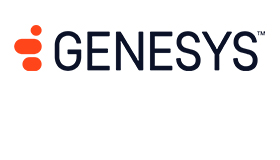Much of the marketing world is still focused on customer acquisition but improving your customer retention strategy will yield far better ROI and cost about five to 25 times less than customer acquisition.
This blog takes an in-depth look at why customer retention matters and highlights 10 powerful ways customer journey analytics can help you immediately reduce churn and improve your customer retention rates.
What Is a Customer Retention Strategy?
Customer retention strategies encompass the set of actions that companies take to stop customers from churning and grow as many as possible into loyal customers.
A customer retention strategy starts with the first customer interaction and continues throughout the entire relationship with your organization.
Why a Strong Customer Retention Strategy Matters
Keeping an existing customer is typically much less expensive than acquiring a new one. Yet companies continue to struggle with customer retention.
In fact, typical B2B customer retention rates stand between 76% and 81%, according to Forrester. The average mobile app retains less than 5% of its users after 30 days.
If you can’t retain your customers after you’ve just made a huge cash outlay to acquire them, they’ll only be a net-negative for you — unable to pay back the customer acquisition cost (CAC).
Essentially, you’re only spending money to lose more money. Customer retention matters to growth and profitability, so it’s critical to focus on strategies to improve customer retention.
For example, repurchase rates among top global brands stood at 45% from the first to second order in 2022. Since repeated purchases become more likely with every purchase, after the third order the likelihood of a follow-up purchase now exceeds 60%.
Acquisition seems more attractive because acquisition campaigns yield faster, more measurable results than customer retention campaigns.
But it’s important to take a long-term view and remember your company’s future revenue and profitability will depend largely on retaining and growing your business with your existing customers.
My Customer Retention Strategy Isn’t Your Customer Retention Strategy
The Timescale Conundrum
Retention can often be a confusing concept — nebulous and shifting in meaning from industry to industry. It would be easy to define and measure if we relied on the customer to indicate they’re no longer a customer.
Sure, that’s easy in subscription-based industries such as Software as a Service (SaaS) or telecom or insurance.
But for many businesses, retention activity is passive in the sense that the customer doesn’t inform you she’s leaving. As a result, you must deduce customer retention based on activity within a certain period of time.
For credit card issuers, 70% of active customers repeat activity within a two-month period, while that number goes up to two years for a tire manufacturer. When it comes to the automobile industry, that number is higher still — as much as five years.
Many companies identify shorter-term behavior that can be used as a proxy for customer retention. Getting customers engaged in shorter-term activities often bodes well for long-term customer retention.
Is Retention About Churn or Loyalty?
Another source of confusion is that, in some industries, retention is synonymous with churn. In others, it goes hand in hand with loyalty.
In subscription-based industries such as telecom or SaaS, customer retention strategies often prioritize churn reduction, rather than focusing on the growth of the customer. Retention campaigns are focused on indications that the customer is about to leave and how to make her stay.
In retail and eCommerce, the focus of retention is usually on creating loyal, engaged customers that return to shop with you again.
The customer retention strategy is often owned by a marketing team responsible for customer loyalty who create campaigns that increase the likelihood of a customer purchasing again as well as increasing the profitability with each repeat purchase.
Customer retention is a nuanced concept and there isn’t a one-size-fits-all customer retention strategy that can be applied in broad strokes across all industries.
How to Measure Customer Retention Rate
You can’t improve what you don’t measure, so the first step is to calculate your customer retention rate. There are two ways to measure retention: customer retention and revenue retention.
Customer retention rate measures the percentage of your customers retained during any given period of time. It’s the opposite of customer churn rate, which measures how many customers leave during a specific time period.
Customer Retention Rate = (Customers at End of Period – New Customers in Period) ÷ Customers at Start of Period
Applying the formula above, if a business starts a month with 500 customers and loses 40 but gains 80 customers, at the end of the month they have 540 customers. The retention rate for the month is (540 – 80)/500 = 92%.
Revenue retention rate, on the other hand, is the proportion of recurring revenue retained in a given time period.
Revenue retention is commonly used in SaaS and other business models that rely on recurring revenue models. SaaS businesses typically focus on Net Revenue Retention (NRR).
Unlike gross retention, NRR also captures a company’s ability to expand engagement through license expansion (e.g. more seats, more storage, etc.) and continuously improve its ability to meet the needs of its customers.
NRR is calculated as the percentage of revenue retained from existing customers at the start of a period after accounting for both expansion revenue and churn. NRR is calculated over a monthly time period using monthly recurring revenue (MRR) as follows.
Net Revenue Retention Rate = (Starting MRR + Expansion MRR – Churned MRR) ÷ Starting MRR
Is your retention rate high or low? There isn’t one right answer; it depends on a company’s particular context — industry, business and revenue model.
The key is to benchmark yourself against competitors and similar companies but most importantly against your own past performance.
10 Ways to Improve Customer Retention with Journey Analytics
Journey analytics can quickly focus attention on the biggest opportunities to improve customer retention by answering critical questions, such as:
- Which customer service interactions result in poor customer experiences and sub-par retention?
- Are there sub-segments with retention issues that can be targeted for quick resolution with high revenue impact?
- Which customer segments are most likely to churn?
- How much do service outages or technical product issues increase churn risk?
- Is acquisition targeting the wrong customers, which can lead to a lower retention rate?
Below are 10 ways companies can find opportunities to improve customer retention, including examples of how journey analytics can help.
1. Look Beyond the Last Interaction to Analyze the Entire Customer Journey
Because of limitations of traditional analytics tools, most organizations typically focus on the last interaction that occurred before the customer churned, incorrectly assuming that it’s a reliable indicator of churn and, therefore, retention.
But experiences accumulate over time. As in personal relationships, trust, familiarity or resentment in customer relationships build up over years. Customers can have experiences that make them feel neglected or indifferent long before they end their relationship with your business.
To discover the root causes of churn, you need to look at the complete customer journey or you will likely reach the wrong conclusions.
Using customer journey analytics, you can analyze the complete end-to-end experience. Different customers will have different experiences, and you can visually see each one, the various touchpoints they encounter and the actions they take.
How a Telco Can Identify the High-Impact CX Issues That Lead to Churn
The CX team at a leading telco analyzes customer support issues across all their support channels to identify the most common issues their customers encounter.
Through the analysis, they might find that billing and cable TV issues are driving the most inquiries into their contact centre. At this point they might assume that the company just needed to improve its billing process and cable TV offering.
However, the team can go beyond this by using customer journey analytics software to better understand the drivers of churn and identify CX initiatives that will have the largest impact on reducing churn.
By using customer journey analytics, they might discover that, while the highest volume of last-touch customer experiences involved billing and TV issues, a prior history of internet connectivity issues are actually driving the largest number of account closures and are responsible for the greatest revenue loss.
Armed with this new information, the CX team could use customer journey analytics to drill down further and isolate the specific internet-related issues that have the highest impact on churn.
Then they could create a proposal for an initiative to address them that shows the projected impact on revenue and their overall customer retention rate.
2. Unify Customer Data to Create a Single View of Your Customer
Data residing in silos is the biggest barrier to understanding your customers. The reason is that data in most organizations isn’t organized around customers.
Instead, it resides in disparate software applications that are set up and maintained by separate business functions or sometimes different groups within a single business function. This makes customer-centered analyses time-consuming and cumbersome, at best, or potentially impossible.
To achieve a single view of your customer and their experience, you need to eliminate the silos that are holding your data hostage by integrating data across all your channels. This enables all customer-facing teams to gain a complete, unified view of the customer experience across every customer journey.
A single customer view is essential for tracking and analyzing customer behavior across multiple channels, as well as for developing behavior-based segmentation schemes.
To create a single view of your customer requires that you aggregate the data across systems and resolve which interactions are associated with the same customer. Next, we’ll explore both in more detail.
Data Integration
The first step is to integrate customer data available to you from across separate software systems that enable each channel on which you and your customers engage.
This data will typically reside in data warehouses, point-of-sale systems, email marketing platforms, marketing automation systems, contact centre platforms and others.
There are several ways to integrate your customer data, including commercial customer data platforms and do-it-yourself data lakes.
But these approaches typically require that data sources conform to a fixed schema and contain a common identifier across all sources. In addition, they usually don’t take a time-series approach necessary to visualize, measure and monitor customer journeys.
In contrast, a journey data hub can integrate data rapidly and easily without first requiring complex data cleaning and transformation processes to conform to a fixed schema.
More advanced customer journey analytics platforms also have built-in ETL capabilities that allow you to simply extract data from your system in its native format. This way, you can integrate new data sources in days, rather than weeks and months using traditional approaches.
Customer Identity Resolution
The most crucial step in unifying customer data is to bring together the separate pieces of data that have been collected across different systems by recognizing that they are associated with the same customer.
This process is known as customer identity resolution, and it shouldn’t require that you manually transform data from each source into a fixed schema with a common customer ID.
State-of-the-art identity resolution techniques piece together individual customer identifiers on the fly, rather than requiring all relationships to be defined in advance.
An advanced identity resolution approach will compare the values in customer identifiers, such as email address, loyalty card number and cookie ID, that has been collected in every event.
It will look to match individual customer identifiers on the fly, rather than requiring all relationships to be defined in advance. This helps build a robust customer identity quickly by joining data associated with a specific person across channels, data sources and time.
3. Measure and Monitor Retention Rates Using Behavioral Segments
The drivers of customer retention aren’t the same for all customers. For example, the factors driving a customer to leave will vary depending on how far the customer has progressed in their lifecycle from purchase through onboarding to renewal or repeat purchase.
Analyzing retention rates and drivers by behavioral segments (like lifecycle stage) will yield better information than looking at all customers in aggregate.
Customer churn in the initial lifecycle stages, like purchase or onboarding is high impact, because you haven’t begun to recoup your customer acquisition cost.
In retail or SaaS businesses with a monthly subscription, high early-lifecycle churn rates from customers immediately returning a product or canceling within a 30-day window could point to product quality or useability problems.
A lot of companies have discovered that reducing early-lifecycle churn comes down to finding the right fit between the customer and your product — and proving value of the service to them quickly.
When your early-lifecycle churn rate is extraordinarily high, examine your sales and marketing funnel to see if you’re targeting the right customer segment.
Mid-lifecycle churn occurs when customers have used the product for a few months and have had a chance to evaluate, understand and experience it.
Improving mid-lifecycle churn rates is about keeping customers engaged and interacting with your product and giving them reasons to keep coming back. This can be done by adding features, providing consistently good customer service and maintaining regular communication.
Late-lifecycle churn happens when an established customer with a long history decides to cancel your service.
To keep customers engaged over the long term, you need to reinforce the core value of your product consistently. That way, you’ll be able to more easily increase a customer’s investment in your company by using journey analytics to identify up-sell and cross-sell opportunities.
4. Identify At-Risk Customers to Reduce Churn
Although behavioral segmentation certainly adds to a company’s understanding of its customers, it doesn’t automatically deliver differentiation. The next step is to identify the right targets — those who are at the highest risk of churn — so you can proactively reach out to them.
Companies are using customer journey analytics to improve their ability to identify at-risk customers to improve their customer retention rate.
By gaining a data-driven understanding of customer preferences and the best ways to reduce friction in particular situations, you can more easily identify and prioritize opportunities for improvement.
Using predictive analytics and machine learning algorithms, journey analytics software can identify which customers are most likely to churn, thus providing valuable data to turn the situation around. This way you can assess the probability of churn risk well before a customer churns, instead of waiting until it’s too late.
5. Focus on Keeping Your Most Profitable Customers
Let’s face it – all customers aren’t equal, and while you may want to retain all, your resources aren’t unlimited. You need to focus on the most profitable ones first.
Customer journey analytics plays a big role in this endeavor by providing a detailed, quantitative picture of the entire customer journey, how they interacted with the product, the problems they faced and the resolutions at each step along the journey.
Using customer journey analytics, you can group your customers into segments defined by profitability, propensity to leave and the likely response to offers to stay. In this way, you can reduce customer churn by prioritizing your resources and proactively engaging with those customers that matter most to your business.
6. Discover Opportunities to Build Loyalty
Retention rates really soar when a company remembers a customer and treats them with attention, consideration and empathy across all of their interactions.
But mining insights across billions of customer interactions using traditional analytics methods and tools is a laborious and slow process. And it tends to confine its usage to a small set of pre-defined problems.
Using artificial intelligence (AI), customer journey analytics provides you with the power to sift through a much larger and more complex data space to uncover opportunities for improving customer retention in places you didn’t even realize you should look.
As a result, you can spend your time prioritizing these insights instead of cleaning and transforming the underlying data.
AI-enabled customer journey analytics software will search across every single relationship in the data (without expressly being told to look for it).
It can predict the likelihood of future behaviors with high accuracy, while simultaneously finding the drivers and inhibitors of customer retention.
How a Bank Can Identify the Friction Points that Lead to Soft Churn
Soft churn is an important aspect of client retention in banking. The reason is that customers often reduce or stop transacting through a financial provider long before they take the time to withdraw all funds and close their accounts.
CX teams banks can use customer journey analytics to better understand the root causes of soft churn, such as when withdrawal activity in a client’s account decreases or direct deposits stop.
Using predictive analytics and machine learning algorithms, the team can visualize high-impact journeys that lead to decreases in savings account deposits, reduction in app activity and stoppages in auto payments.
By analyzing mobile app usage, for example, the CX team might discover that in-app check deposits and bill payment problems are the main contributors to soft churn.
The bank can use this kind of data to justify a redesign of their app experience to improve usability, increase account engagement, and ultimately reduce churn risk.
7. Target the Right Next Customers
If you’re going to work hard to retain your most profitable customers, then another way to reduce customer churn is to be laser focused on acquiring new customers that are less likely to churn in the future.
No matter how deep and sophisticated your retention strategy, it will be a huge waste of resources if you are attracting the wrong audience. It is imperative to make sure you are targeting those customers who are the best long-term fit for your product and can see the value in it.
Customer journey analytics tools can help you better target and segment customers based on behavioral, demographic and product attributes.
Journey analytics tools discover the most predictable paths and the key attributes of prospects who eventually turn into long-term, profitable customers.
Armed with this information, you can create a more robust customer retention strategy, more precisely target the right audience, set the appropriate customer expectations and significantly reduce the possibility of eventual churn.
8. Make Differentiated and Targeted Offers Based on Behavior
Actively engaged customers will naturally make more frequent purchases, spend more in each transaction and will be more likely to remain loyal customers.
Making differentiated and targeted product offers is the best way to keep customers engaged — and keep them coming back for more.
The single customer view and real-time customer behavior data that customer journey analytics platforms provide give you powerful insights for creating highly personalized and targeted recommendations.
For example, customers who recently purchased a product but haven’t activated it yet should receive additional information and helpful hints, rather than offers for complementary products, and never receive an offer for the product they just purchased (which happens far too frequently!).
9. Build More Effective Loyalty Programs by Aligning Rewards with Specific Behaviors
Customer loyalty programs are proven to have a powerful impact on customer retention. Numerous studies have shown that loyal customers are much more likely to repurchase, more likely to forgive mistakes, more likely to try new offerings, and significantly more likely to refer other customers.
Loyalty programs usually take the form of memberships that confer rewards, such as airline frequent flyer programs.
To stand out in today’s market where consumers are already flooded with many loyalty offers, differentiate your loyalty program by offering unique and personalized rewards — not just “free stuff” that has no intrinsic value in the life of your customers.
Using customer journey analytics, you can model and track customer behavior to design and execute cutting-edge loyalty programs.
One idea that’s beginning to take hold now is that of “reciprocal” loyalty or pre-purchase loyalty where the intent is to offer thanks for a small step on the part of the customer before the purchase, to generate a sense of loyalty and encourage the purchase.
For instance, discover a way to give thanks to a customer who has tweeted positive things about your brand or contributed positively in an online forum.
10. Identify Customer Experience Issues to Increase Retention Rates
Customer journey analytics can help you quickly identify problem areas throughout every customer journey.
These problem areas could be caused by flawed and inefficient processes, inconsistencies in your user experience, lack of personalized service, incorrect information on web pages or knowledge base articles, product bugs, or a whole host of other things.
Leading companies use customer journey analytics to identify when customers repeat steps, repeatedly switch channels, or even abandon their journey entirely.
These organizations can focus their efforts on fixing issues that will have the highest impact on customer satisfaction and improve retention rates.
By using the insights uncovered, you can determine the size of the problem (# customers, cost, etc.); decide on the appropriate steps to take to mitigate these customer experience issues; and create an improved experience that reduces your churn rate.
This approach, called customer journey management, is being adopted by leading customer-centric companies around the world.
Putting It All Together
A strong customer retention strategy is built on a strong customer experience strategy.
Today, leading customer-centric organizations are using experience orchestration to build deeper, more loyal relationships with their customers by coordinating technology based on the experience their customers seek across all channels of engagement.
At the end of the day, companies that deliver simple, frictionless experiences through intuitive products and empathic employee interactions will have happy, loyal customers and high customer retention rates.
This blog post has been re-published by kind permission of Genesys – View the Original Article
For more information about Genesys - visit the Genesys Website
Call Centre Helper is not responsible for the content of these guest blog posts. The opinions expressed in this article are those of the author, and do not necessarily reflect those of Call Centre Helper.
Author: Genesys
Published On: 17th Feb 2023
Read more about - Guest Blogs, Genesys






 Genesys empowers more than 8,000 organisations in over 100 countries to improve loyalty and business outcomes by creating the best experiences for their customers and employees. Through Genesys Cloud, the AI-Powered Experience Orchestration platform, Genesys delivers the future of CX to organisations of all sizes so they can provide empathetic, personalised experience at scale. As the trusted platform that is born in the cloud, Genesys Cloud helps organisations accelerate growth by enabling them to differentiate with the right customer experience at the right time, while driving stronger workforce engagement, efficiency and operational improvements.
Genesys empowers more than 8,000 organisations in over 100 countries to improve loyalty and business outcomes by creating the best experiences for their customers and employees. Through Genesys Cloud, the AI-Powered Experience Orchestration platform, Genesys delivers the future of CX to organisations of all sizes so they can provide empathetic, personalised experience at scale. As the trusted platform that is born in the cloud, Genesys Cloud helps organisations accelerate growth by enabling them to differentiate with the right customer experience at the right time, while driving stronger workforce engagement, efficiency and operational improvements. 






























